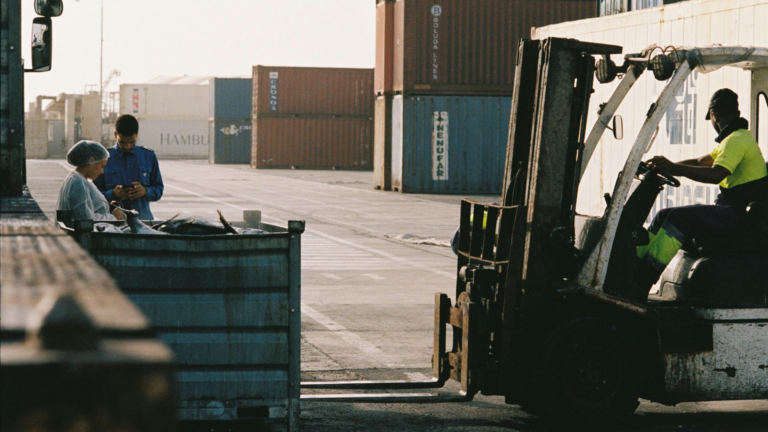All About Temperature Monitoring
Imagine running a laboratory and one day and you realize that the temperature monitoring system has been faulty for weeks, and as a result, the vaccines stored in the refrigerated unit have been compromised.
Not only has this resulted in significant financial losses, but it also puts you, as a manager in a difficult position with regulatory agencies who enforce strict temperature control regulations.
Further investigation reveals that the temperature monitoring system was not maintained properly, and the incorrect temperatures went unnoticed, leading to product waste.
Such a situation highlights the importance of correct temperature monitoring in industrial processes. Managers must ensure that their temperature monitoring systems are working correctly to avoid the challenges of product waste, equipment damage, compliance violations, safety hazards, and reduced efficiency.
By taking the necessary steps to monitor temperature correctly, managers can protect their operations, maintain efficiency, and ensure compliance with regulations.
In this blog, we'll learn about temperature monitoring, and how to choose the right one.
What is temperature monitoring?
Temperature monitoring is the process of measuring and recording the temperature of a specific environment or process in order to control it. This is usually done using temperature sensors, which are devices that convert temperature into an electrical signal that can be recorded and analyzed.
Temperature monitoring is used in a variety of industries, including food and beverage, pharmaceutical, petrochemical, and HVAC, among others.
The main objective of temperature monitoring is to ensure that temperatures remain within a specified range, which is determined based on the specific requirements of the process or environment being monitored. This can be accomplished through continuous monitoring and analysis of temperature data, which allows for early detection of any deviations and corrective action to be taken if necessary.
The different systems to monitor the temperature:
Thermocouples
A thermocouple is a device that measures temperature by using the voltage generated between two dissimilar metals. It is one of the most common and inexpensive temperature sensors.
Advantages:
- Wide temperature range
- Fast response time
- Durable
Disadvantages:
- Regular Calibration
- Limited accuracy
- Different thermocouples are required for different temperature ranges
RTDs (Resistance Temperature Detectors)
RTDs measure temperature by monitoring changes in electrical resistance. They are accurate and reliable but can be more expensive than thermocouples.
Advantages:
- High accuracy & Stability
- Linear output
- Wide temperature range
Disadvantages:
- Slow response time
- Fragile
- Price
Infrared Thermometers
Infrared thermometers measure temperature by detecting the infrared radiation emitted by an object. They are non-contact sensors that are useful for measuring high temperatures or inaccessible objects.
Advantages:
- Non-contact measurement
- Fast response time
- Versatility
Disadvantages:
- Emissivity dependence
- Reflective surface accuracy
- Distance to spot ratio
Thermistors
Thermistors are temperature-sensitive resistors that change resistance in response to temperature changes. They are small, low-cost, and fast-responding sensors.
Advantages:
- Fast response time
- High accuracy
- Low cost
Disadvantages:
- Limited temperature range
- Non-linear output
- Easily damageable
Digital thermometers
Digital thermometers are temperature sensors that use electronic components to measure and display temperature readings. They can be used for both contact and non-contact temperature measurement.
Advantages:
- Easy to use
- Portability
- Accuracy
Disadvantages:
- Limited temperature range
- Slow response time
- Contact measurement
Data Loggers
Data loggers are devices that can store temperature readings over a period of time, allowing for continuous monitoring. They can be standalone devices or integrated into other monitoring systems.
Advantages:
- Long-term monitoring capability
- Portable and easy to deploy
- High accuracy
Disadvantages:
- Limited real-time
- Slow data transfer
- Limited battery life
- Susceptibility to electromagnetic interference.
Which temperature monitoring system should you choose?
Choosing the right temperature monitoring system for your industrial process is a big decision. By considering a few key factors, you'll be able to find the perfect fit for your needs.
First, think about the size of your operation. This will give you a good idea of how many temperature sensors you'll need. And if you need to keep an eye on things in real time, make sure your system gives you access to your temperature data from anywhere.
Next, think about where the system will be installed. Different types of sensors might work better in different environments, like high-heat areas or harsh conditions. So it's important to choose sensors that will be up for the challenge!
Finally, consider how you'll manage all the data the system will generate. Depending on the size of your operation, you may want to consider a centralized system that can keep everything organized for you.
By keeping these factors in mind, you'll be able to choose a temperature monitoring system that works for you.
What are the benefits of monitoring temperature?
Temperature monitoring in industrial processes is essential for ensuring quality, efficiency, and safety in various industries. It helps control the temperature of industrial processes, resulting in consistent product quality and reducing the risk of spoilage or contamination.
By monitoring and controlling temperatures, companies can also prolong the life of critical equipment and reduce the risk of equipment damage due to overheating. Furthermore, temperature monitoring can help improve energy efficiency, thus reducing costs and increasing profitability. It also helps maintain a safe working environment by detecting and preventing hazardous temperature conditions.
Moreover, temperature monitoring provides real-time data, enabling companies to make prompt corrective actions to improve process control.
Finally, it is a requirement for regulatory compliance in industries such as food and pharmaceuticals. All of these benefits make temperature monitoring a critical aspect of industrial processes.
Start investing in the right system!
Temperature monitoring is an invaluable tool for any company and can make all the difference in terms of productivity and a steady supply chain.
When it comes to investing in the right system, there are plenty of options out there if you know where to look. The key is understanding how each one works and recognizing which one will work best with your company’s needs and equipment.
If after reading this article, you still have questions regarding temperature monitoring or still can't decide which option is right for you, don't hesitate to contact us. To ensure we get you the most suitable product let's talk and see how we can find the right match for your company.



